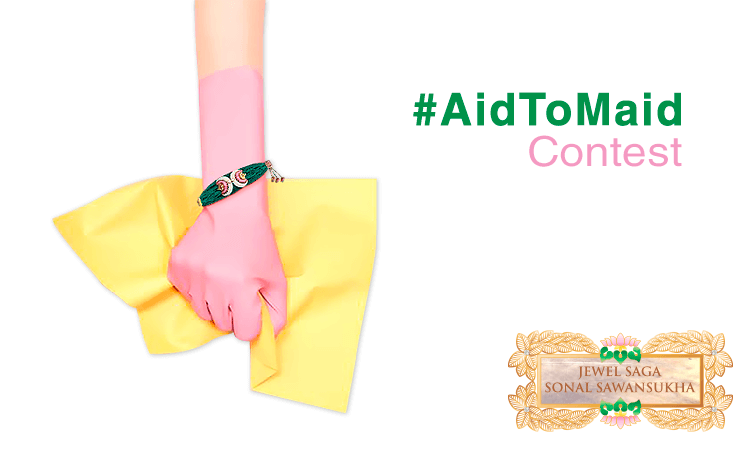Award-Winning Chef Dipna Anand On Taking The ‘Brilliant’ Legacy Forward Through Her Culinary Journey
- IWB Post
- April 19, 2019

Be it the aloo parantha, garlic chutney, or even the humble dal palak, what is that one thing about “ghar ka khana” that adds so much meaning, emotions, and flavour to it? Probably it’s the years of family legacy fostered through generations that imparts every family’s food its unique taste. Doesn’t every home’s food has a distinct taste of its own, unmatched and unreplicated by any other?
Sadly, when it comes to food, we rarely go beyond the recipes, and award-winning chef Dipna Anand has been trying to change that. She believes that it is integral to know and understand the history and the legacy behind what’s on your plate. In fact, even her culinary journey is no short of a legacy itself.
Like she says, “I think cooking is in my blood. I come from a family of chefs and restaurateurs.” For Dipna, it all started with her grandfather. “My grandfathers started the first Brilliant restaurant in Nairobi, Kenya, in 1950.” Then sometime around 1975, the family decided to move to the UK, where Dipna’s father and his brother opened Brilliant restaurant yet again in 1975 in Southall.
She shares, “At that time, we started with a 36-seat setup. Today, we have extended up to 250 seats and that stands as a testimony of how the restaurant has grown and extended.”
As for her passionate affair with food, she literally has to tread through memory lane and go as far as she can to mark when it really began. “I often used to sit with my mom in the kitchen. She also helped my dad in the restaurant and my brother and I would often accompany her there and try to make ourselves helpful. I always admired what they were doing, aspired to be like them, and wanted to pursue a career in hospitality,” Dipna shares.
She adds, “My father was the head chef of the restaurant. Just watching him making food, those moments were priceless. I watched him mixing food in these big pots and adding spices to them without even measuring and that’s probably when I gained my confidence in cooking.”
It shouldn’t come as a surprise that she went on to receive a first-class honours degree in Hospitality and Catering from The University of West London and was consequently awarded a post-graduate scholarship from the same university. She eventually started teaching Indian cuisine at the university.
Fired by passion, Dipna went on taking up one culinary role after another as she effortlessly juggled them all. She also started a Cookery School at The Brilliant Restaurant so as to further her love for cooking and preserving it by passing it on. Today, she has two cookbooks to her credit and recently started a new restaurant called “Dip In Brilliant” in Chelsea.
Despite the heights that she has reached, Dipna still has memories of the aroma of masala chicken and sooji halwa wafting on Mondays, the day when the restaurant would be shut and her father cooked at home. In fact, Dipna’s culinary adventures with her father continue to date as he still accompanies her to pop-ups that they organize in corporate offices and similar spaces. “I still watch him in amazement as he makes rice in great quantities. He is, in fact, famous as the ‘Rice man,'” she shares in a voice laced with fondness and unyielding admiration.
The Indian recipes at Brilliant kitchens with a Kenyan slant are something that have been handed down through generations and lend the restaurant chain its unique touch. It is the very same authenticity that adds to the significance of the food served in Brilliant kitchens. Dipna shares, “We have paid a lot of attention to the story behind our food legacy. What started over 75 years ago has remained intact till date. The recipes haven’t been tweaked even a bit since then.”
She adds, “It is very important to understand from where the food on your plate comes from, however, there is never enough to learn about it.” Recognising the value and importance of food history and lack of information around the same, they have now started a “Just Ask” programme to foster the same reverence and curiosity among the guests. “We hope to encourage our guests to ask where the food on their plate comes from. Prince Charles is a big supporter of the programme and has visited our kitchens twice.”
At the Brilliant restaurant, the focus is always on the fresh, local produce and the aim of the “Just Ask” programme is also to encourage the same.
Unfortunately, culture is not the only thing that brews in the kitchens. For years now, they have been a sight of a strange paradox. While traditionally it is the women who inherit the kitchens, strangely enough, it is mostly the men who are seen dominating professional kitchens.
However, Dipna feels that this trend is finally beginning to change. She says, “Things are changing. I visit around two-three kitchens per week and I see that the number of the women in professional kitchens is increasing. I find it very inspiring when women reach out to me and share that they aspire to grow like me. Even in my kitchens when I am surrounded with a lot of men, I, through my work, like to show that I can do anything just as good as they do it. Besides, there exists no evidence showing that men are better in kitchen than women.”
As for the recipe of mixing business aspirations with one’s passions, Dipna has just one thing to say, “It is very easy to have a successful business when you follow your passions. All you need to do is enjoy your work. People often ask me how do I do so many things at once and I always answer it by saying, ‘Because I am passionate about all of them.’ If I didn’t enjoy what I was doing, I wouldn’t be successful. I don’t wake up with an “Oh no, another day” attitude. I get up and say, “Yes, this is what I am going to do today. Great!’”
The food from a particular place says a lot about its culture. However, if we go by the popular narrative, things get a racist touch as soon as the mention of the word “curry” is made in the British-Indian context.
Dipna, who proudly flaunts the label of “curry queen”, however, shares that the reality is quite different. She shares, “India is known as the “curry capital” of the world here in Britain, and the Britons have always had this mad love affair with Indian cooking. I mean just in the UK, you can find 32 different varieties of Indian cooking. Every time they go out for a vacation, they want to come back to the curry and that speaks for itself. Irrespective of how it is being propagated, Indian cuisine is one of the most loved cuisine here and you can see Indian restaurants opening left, right, and centre.”
She adds, “Tandoori cooking has been really popular for the last 20 years or so as it doesn’t involve the use of a lot of oil or grease in the cooking process. Thus, recipes like Malai Chicken Tikka, Paneer Tikka, Lamb Chops etc. are very, very famous. Plus, they also come accompanied with a very rich history.”
Ask Dipna about that one dish that’s synonymous with the word “legacy” for her and she instantly says, “It has to be Masaledar Haadi Wala Chicken. The recipe has been passed down through generations and everyone in our family has cooked it and cherished it at some point of time or the other.”
Too much teasing already by all the food talk? Here’s the recipe:
Masaledar Haadi Wala Chicken (Kenya Style)
“The founder of the Brilliant brand, my grandfather Bishen Dass used to cook this Masaledar Haadi Wala Chicken (which translates to chicken on the bone cooked in a masala sauce) in huge quantities back in Kenya at banquets for up to 5,000 at one time and it’s a recipe that has now travelled for more than four generations in the Anand family.
My dad says, “Papa Ji (my grandfather) always said chicken on the bone tasted better” as the flavour released from the bone infuses into the masala sauce and my father has always drilled this into me too and I too couldn’t agree more. Of course, some people do prefer meat off the bone – it’s down to personal preference. However, if you have not tried cooking chicken masala on the bone like this, then do give it a go as you could surprise yourself.
This is a recipe that has gone down in history in my family as well as with customers who used to visit the Brilliant Restaurant back in Kenya in the 1950s and now dine at the Brilliant in Southall and Dip in Brilliant in Chelsea especially to savour the original Masaledar Haadi Wala Chicken, Kenyan style. Try it with a Lachha Parantha or hot fluffy chapatti.”
Recipe
(Serves 4-5)
Ingredients
- 6 tbsp vegetable oil
- 150g onions, finely chopped
- 2 ½ tbsp ginger and garlic paste
- 3 finger green chillies, finely chopped or made into a paste
- 35g butter
- 350g plum peeled tomatoes, blended to a smooth paste
- 1 ½ tsp salt
- 1kg or whole chicken, skinless, on the bone pieces
- 120-130ml water
- 3 tbsp fresh coriander, finely chopped
Spices
2 tsp cumin seeds
1 ½ tsp red chilli powder
1 ½ tsp turmeric
1 tsp carom seeds, crushed
2 tsp dried fenugreek leaves, crushed
1 ½ tsp garam masala
Garnish suggestion: Pea shoot leaves to garnish
Method:
- Heat 4 tbsp of oil in a large sauté pan.
- Sizzle cumin in the oil for a minute or so before adding the onions.
- Cook the onions until very brown and caramelised, which should take 10-12 minutes, on high heat. Stir frequently.
- Add ginger and garlic paste, green chilli paste and butter and cook for 4-5 minutes on medium heat.
- Add the tomatoes, red chilli powder, turmeric and salt followed by 2 remaining tablespoons of oil and cook for 7-8 minutes. You may want to use the lid as the masala starts to spit. Do, however, keep stirring frequently to avoid the masala catching the bottom of the pan.
- Once the masala has started to change colour and release oil from the sides of the pan, add the chicken to the saucepan together with about 5 tbsp of water to help the chicken cook. Cover the saucepan and let the chicken steam in the masala, mixing every two minutes or so.
- Once the chicken has been cooking for about 5-6 minutes in the masala sauce, add 3-4 more tablespoons of water and cook for a further 5-6 minutes with the saucepan covered as much as possible, without letting the masala catch the bottom of the pan.
- Lower the heat slightly and cook the chicken for a further 2-3 minutes until fully cooked.
- Add the finishing touches of carom seeds, fenugreek leaves, fresh coriander, and garam masala and cook for a final 2 minutes.
- Serve with a lachcha paratha or hot chapatti and experience
- 0
- 0













